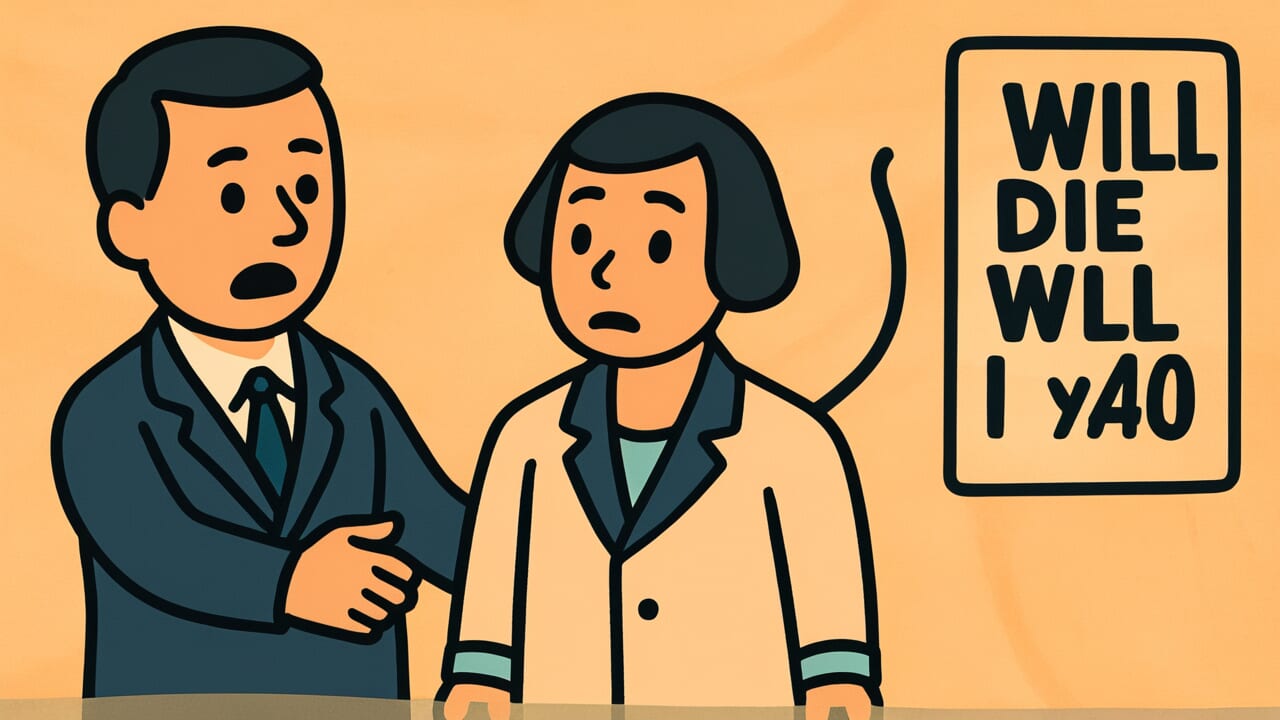How to Read “Those who say they’re dying never actually die”
Shinu shinu to iu mono ni shinda tameshi nashi
Meaning of “Those who say they’re dying never actually die”
This proverb means that people who dramatically say “I’m dying” or “I’m done for” are usually not in serious danger at all. It describes how people who speak pessimistically are often full of life energy.
The saying is used when someone complains dramatically about minor things, saying “I’m dying” or “I thought I was going to die.” People around them use this proverb when they don’t take these words at face value and judge “Well, they’ll be fine.”
It’s a reminder to observe calmly when people exaggerate their feelings of exhaustion, hardship, or suffering.
Even today, we see people casually using the expression “dying” on social media. But the essence of this proverb hasn’t changed.
People in truly critical situations are actually quiet. They don’t have the energy for dramatic expressions.
Origin and Etymology
No specific source has been identified for this proverb. However, it’s believed to have been widely used among common people since the Edo period.
The structure of the phrase is striking. It contrasts “those who say they’re dying” with “never actually die.”
Our ancestors observed human behavior for many years. They noticed a common pattern: people who dramatically say “I’m dying” tend to keep living energetically.
This observation may have been even clearer in times when medical care was undeveloped.
People back then regularly witnessed the difference between those truly facing death and those simply complaining about discomfort or fatigue. People in real danger tend to become quiet and speak less.
On the other hand, having energy allows people to complain loudly. People recognized this paradoxical truth.
This proverb can be seen as life wisdom accumulated through human observation. It captures the gap between words and reality, and the disconnect between human psychology and behavior.
We must admire our ancestors’ insight in expressing this so concisely.
Interesting Facts
There’s an interesting medical observation here. In emergency medicine, patients who quietly stay still are often more seriously ill than those loudly complaining of pain.
This happens because when the body faces a truly critical situation, a physiological response kicks in to conserve energy.
Psychology has a concept called “catharsis effect.” This is the phenomenon where expressing anxiety or pain in words actually reduces stress.
In other words, people who can say “I’m dying” are maintaining psychological stability through the act of expression itself.
Usage Examples
- He always says he’s dying from work, but “those who say they’re dying never actually die”—in the end, he works more energetically than anyone
- My grandmother complains about her health every day, but “those who say they’re dying never actually die”—she’s still going strong past 90
Universal Wisdom
This proverb has been passed down because it contains deep insight into the mysterious relationship between human vitality and expressive behavior.
Why do people use dramatic expressions when suffering? It’s an instinctive act to externalize pain through words and lighten the burden on their hearts.
Paradoxically, being able to say “I’m dying” is proof that you’re still far from death. When people truly face a life-threatening crisis, they lose words.
Silence is the real sign of danger. Our ancestors understood this human truth.
This proverb also encourages calmness in those around us. There’s no need to be overly upset or worried about someone’s dramatic complaints.
Rather, understand that the person has enough energy to express themselves. It teaches the importance of maintaining appropriate distance.
Humans may preserve their will to live by expressing weakness. Being able to put complaints and pain into words is actually part of healthy life activity.
This proverb contains such deep truths about human existence.
When AI Hears This
What this proverb overlooks is a simple fact: people who actually died cannot report whether they said “I’m dying” or not.
In other words, we can only observe survivors. Among them, many “kept saying they were dying,” which is why this proverb was born.
There’s a famous story about statistician Wald during World War II. When examining returning bombers’ bullet holes, they concentrated on wings and fuselages.
The military thought “we should reinforce these areas.” But Wald argued the opposite: “Planes that didn’t return must have been hit in engines or cockpits.” Areas with fewer bullet holes were actually fatal.
This proverb has the same structure. People who died suddenly without saying “I’m dying,” people who died too quickly to speak, people who thought it but never said it aloud.
Such “silent data” doesn’t appear in statistics. For example, in emergency medicine, more serious patients tend to be quieter. People in truly dangerous conditions don’t even have the energy to complain.
We only count the “people who keep saying they’re dying” in front of us. We forget those who disappeared from view.
This proverb ironically embodies the danger of judging the world only by survivors’ testimony.
Lessons for Today
What this proverb teaches modern people is the importance of discerning the gap between words and reality.
On social media and messaging apps, we’re surrounded daily by dramatic expressions. In an era when extreme words like “dying,” “finished,” and “impossible” are thrown around casually, this wisdom shines brighter.
The key isn’t to completely ignore others’ complaints. Rather, it’s to develop the ability to see someone’s true condition without being fooled by surface-level words.
Approach people who speak dramatically with appropriate empathy and distance. Meanwhile, pay careful attention to those suffering quietly. Such insight is what’s needed.
And this applies to yourself too. When you say “I’m done for,” it might actually be a sign you’re still okay.
Being able to express weakness is actually proof of strength. Pain you can put into words is pain you can overcome.
Believe that, and keep moving forward one step at a time.



Comments